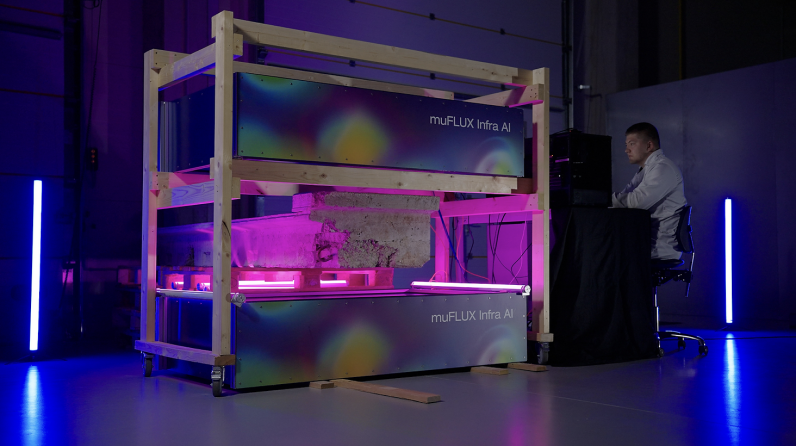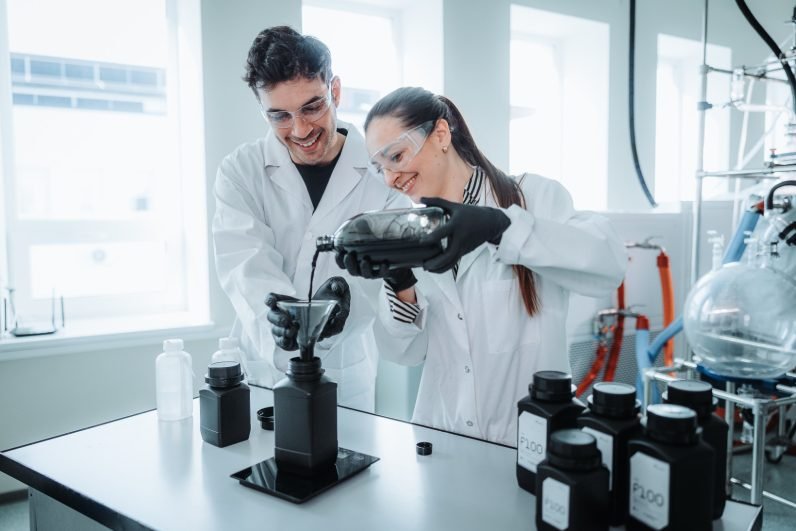Back in the early 2000s, Estonia was a fast-paced, vibrant leftovers of Soviet influence. It was with passion turning into a digital community with new things like e-government and online voting.
And, of course, it gave birth to Skype, a company that would start the journey of the small Baltic country as a starting point and “the land of unicorns.”
Since then, Estonia has established itself as a leader in breeding top-notch software companies, such as Bolt and Wise. Now, it aims to become a deep technology center, to accelerate the development of research and science entrepreneurs.
Estonian deeptech is still young. About 70% of the companies were born in the last five years.
However, this sector is growing rapidly. In 2023, deeptech startups reached a record revenue of €227.2mnin – an increase of 14% from last year. They also raised 394 million euros, up from 254 million euros last year.
2025 TNW Conference – Return to NDSM on June 19-20, 2025 – Save the date!
Wrapping up our amazing 2024 edition, we are excited to announce our return to Amsterdam NDSM in 2025. Register now!
To the deeptech hub
The Estonian government’s vision is for deeptech companies to account for about 30% of the country’s total number of startups in 2030. This translates to 500 deeptech startups – up from 132 in 2023.
Another important part of Estonia’s operational plan is to help get additional capital, especially in the form of grants and angel funding, especially for early stage businesses.
One is to strengthen entrepreneurship within education through dedicated courses for students. Equally important is ensuring a smooth spinout process.
According to Sten Tamkivi, former CEO of Skype and partner at VC firm Plural, Tallinn University of Technology (TalTech) and University of Tartu have both taken active steps in the past years.
“They’ve done their own thing and made sure that the IP spinout process and the equity process are easy,” Tamkivi tells TNW.
The third area is their startups – and their ability to turn technological advances into commercial products.
Cosmic rays for 3D scanning
Tallinn-based GSCAN uses muon tomography for 3D analysis and chemical structure analysis.
Muons are small atomic particles that make up half of the cosmic rays that reach the Earth’s atmosphere.
GSCAN collects muons through its material detection technology, which combines the use of AI to measure the flow of muons as they pass through an object, create 3D images, and analyze materials.


“This is a platform technology that you can use everywhere, like X-ray tomography,” Andi Hektor, co-founder and chief strategy officer at the startup and former CERN researcher, tells TNW.
According to Hektor, muon tomography offers many advantages over X-rays. First, it has the ability to penetrate very large objects and provide information about the chemical composition of the material. It is also safe for humans and the environment, since muons are caused by natural radiation.
One of GSCAN’s focus areas is non-destructive testing (NDT) for the built environment. NDT helps to assess the quality of a material or structure for possible defects without destroying it.
Hektor gives an example.
“The world is full of old bridges, buildings and tunnels made of reinforced concrete. Reinforced concrete has a long life and in these structures there are steels that can expand. ”
“Understanding what’s going on inside these buildings is important for both safety and economic reasons,” he says.
GSCAN is undertaking a number of projects to date, including the assessment of two old nuclear reactors for their safe decommissioning process.
Next to the built environment, the startup also uses its technology for practices and security systems.
In March, GSCAN raised €3mn in seed funding from investors including Bolt founder Markus Vilig. This brought the total amount raised since its founding in 2019 to €5.1mn.
Green carbon nanomaterials and graphite
A spinout from the University of Tartu, Up Catalyst converts CO2 emissions into green nanomaterials of carbon and graphite.
The startup technology extracts CO2 from biomass waste and flue gases from heavy industrial emitters. It then turns raw carbon into a process called “molt salt electrolysis”.
“We are essentially converting carbon dioxide into electro-transforming carbon nanomaterials,” Apostolos Segkos, head of development at Up Catalyst, tells TNW.
The first goal of the startup is to achieve a price balance with the old carbon sources. The second is to reduce dependence on fossil fuels, while reducing the environmental impact of the production of green products.
According to Segkos, the Up Catalyst mission is aligned with the EU’s plans for energy transition and the need to secure a reliable (and domestic) supply of essential goods.
“Graphite, among other important carbon products, is considered an important resource by the EU, especially when we import 99% of it, most of which comes from China.”
Graphite is a key component of EV batteries, which typically contain between 50kg and 100kg of material.
In turn, carbon nanomaterials are important additives in power generation and energy storage devices, including batteries, fuel cells and solar cells.


In July, Up Catalyst received a €2.36mn funding boost to accelerate the development of an industrial test rig.
According to the launch, the machine will be able to produce 100 tons of CO2 per year, which can provide 27 tons of green carbon resources.
Up Catalyst came out of the University of Tartu in 2019.
“We had great success because we were able to fully transfer the IP from the university to the company,” Teele Niidas, the startup’s CMO, tells TNW.
Despite “difficult decisions” in negotiations, the spinout process was “smooth,” Niidas says.
“I think everyone [in the Estonian ecosystem] recognizes that science-based startups have a great future if they are truly supported by academics.”
Nanotech dressing for wound dressing
Another startup in the field of nanotech is Nanordica Medical, which has developed an antibacterial wound.
Originating from the National Institute of Chemistry and Biophysics (NICPB) of Estonia (NICPB), the startup sought to develop a more effective solution for bacterial wound infections. This affects about 100 million people worldwide, including those with diabetes.
“Typical wound dressings use silver,” Olesja Bondarenko, CEO of Nanordica tells TNW.
“Silver has good anti-bacterial properties. But the problem is that it also has side effects and can cause scarring.”
After research, the team found that the key was combining silver and copper nanoparticles.
“We found that they enhance each other, while reducing the negative effects,” Bondarenko says.
Nanordica dressings work by attracting bacteria and inactivating them, enabling cell regeneration and wound healing. The Tallinn-based startup claims that the solution provides 8x better treatment compared to conventional care products.
The company is already conducting small clinical trials in Estonia with 30 diabetic patients with peptic ulcers. The results were promising, and the dressing showed twice as fast healing compared to the traditional silver dressing.
Nanordica plans to confirm these results in an upcoming larger trial and expects to receive approval from the EU health regulator this year.
After the planned wound dressing business in 2025, the company will aim to expand its antibacterial products.


Nanordica recently raised €1.75mn from VC investors. In the first years after it was founded in 2019, it relied on funding from the founders and grants from EIC, Enterprise Estonia, and NICPB – where it bought IP.
According to Bondarenko, software has always dominated investor interest.
“But now, I think there is a real change,” says Bondarenko.
“There is a growing understanding that science-based deeptech is very important. And the same investors who were focused on software are now thinking about different opportunities.”
“The likelihood is very high that we will soon see unicorns in healthtech, and deeptech in general.”
#Science #introduces #generation #techsavvy #people #Estonia